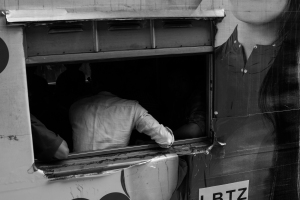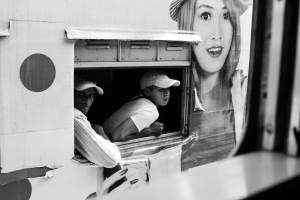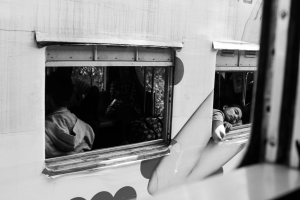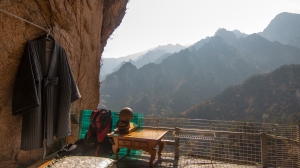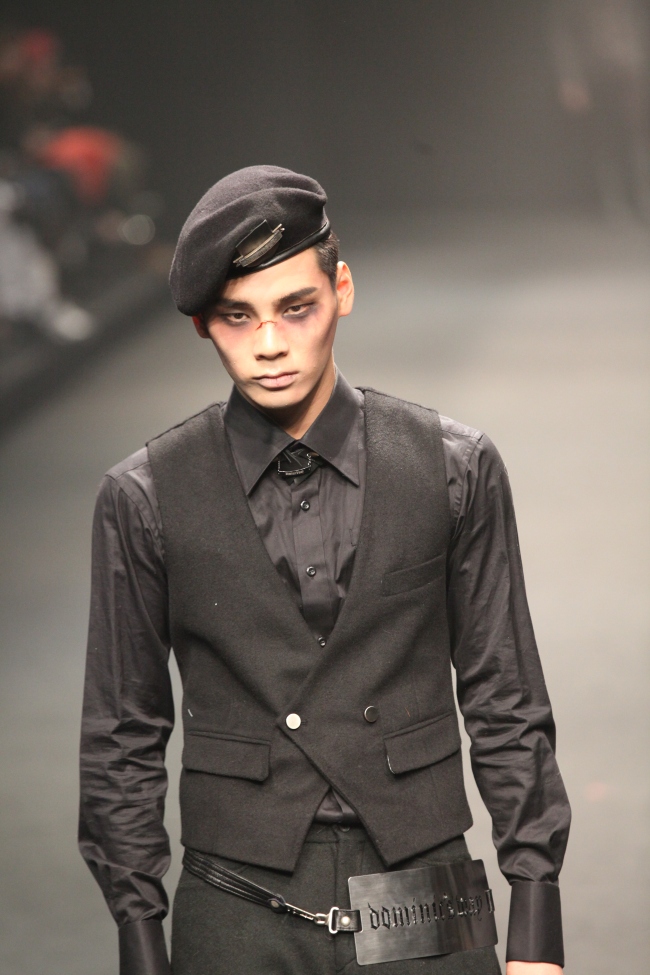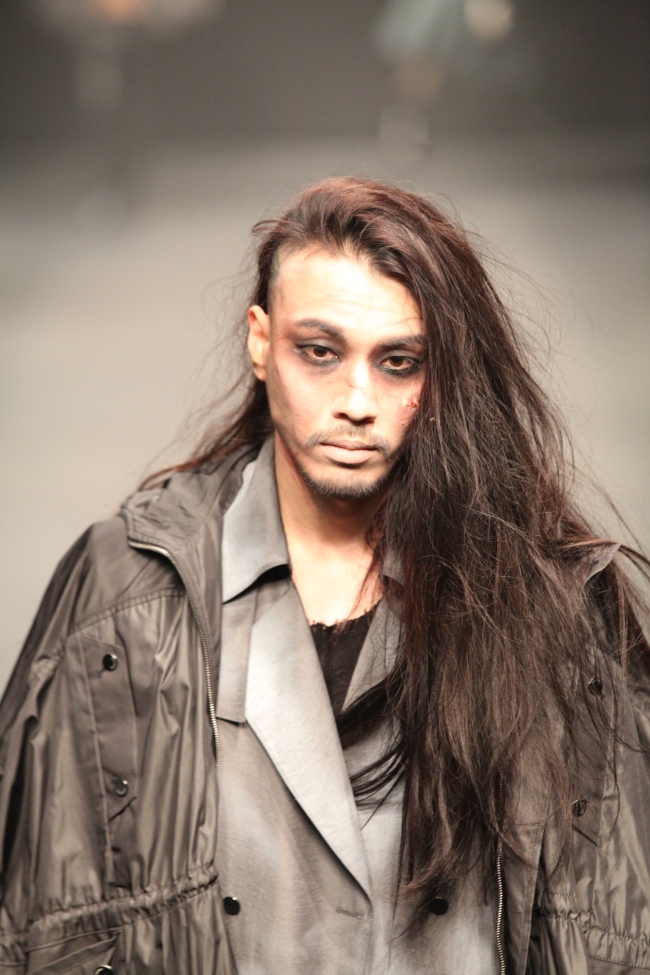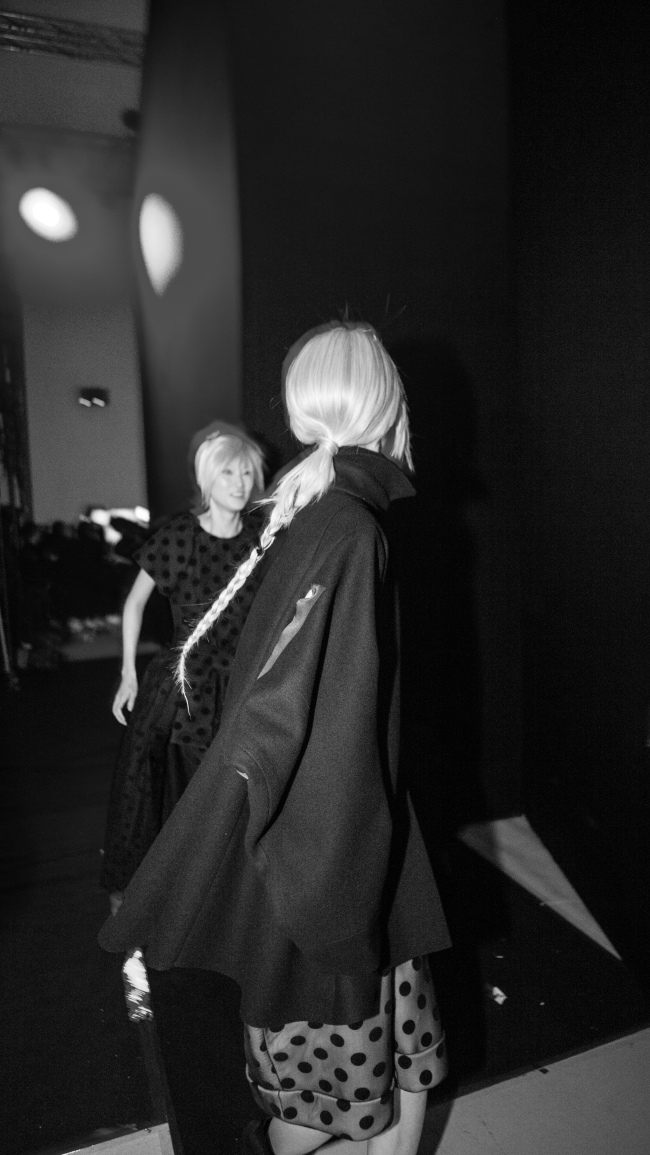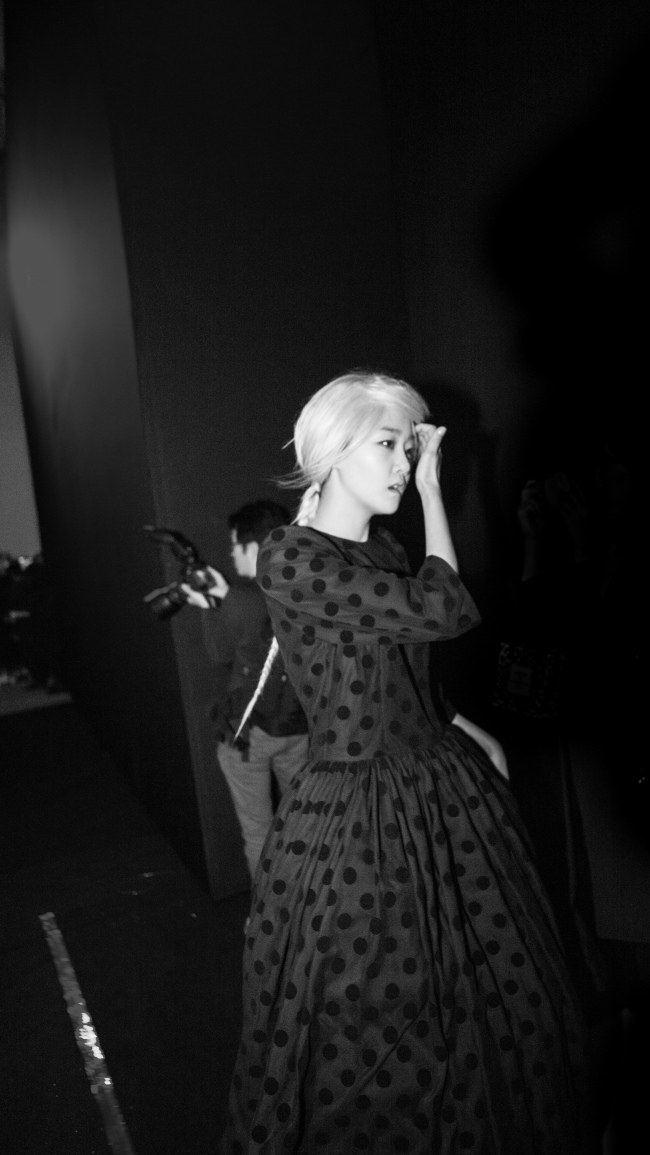The forty-six kilometre loop which circles Yangon is a fantastic way to see some variety. A single ticket covers the whole three hour trip, and will show a cross section of the city.
Buddha, Seoraksan National Park
Don’t look down
Seoraksan National Park, South Korea
Informing you that Koreans are keen hikers would be a drastic understatement. Each weekend, the mountain sides are decorated by dozens in their colourful, pristinely kept, top-of-the-range hiking gear.
Perhaps this is the key to the South Korean aging myth (they don’t); slogging it out on mountains in the cold morning through the bitter years of middle age.
Seoraksan National Park, and the changing of the seasons.
Autumn is a beautiful time of year in South Korea. The humidity of the summer dissipates into dry, clear sunshine, and the landscape becomes saturated with colours.
Seoraksan is a large national park to the east, near the coastal town of Sokcho. There are a number of different trails available for all abilities. There’s no better place to breathe fresh air and see the leaves change.
Muuido Sunsets 무의도
Muuido is a small island off the coast of Incheon. It’s especially popular during the summer season, as it is so easy to reach from Seoul.
The tides are strange here; during low tide, expect the water to retreat at least a mile back into the ocean. This allows for a beautiful walk during the sunset.
Beach huts are available for 40,000 won, and they sleep up to four people. Camping on the beach is 5,000 won.
If you are living in Korea, you can find how to get to Muuido Island here
http://english.visitkorea.or.kr/enu/SI/SI_EN_3_1_1_1.jsp?cid=264519
Seoul Fashion Week
Lanterns, Seoul

Buddha’s Birthday will be celebrated at the beginning of May. In anticipation of this, temples around Seoul are decorated with lanterns. Spring not only brings sun, but also a burst of colour
Jogyesa Temple, Seoul
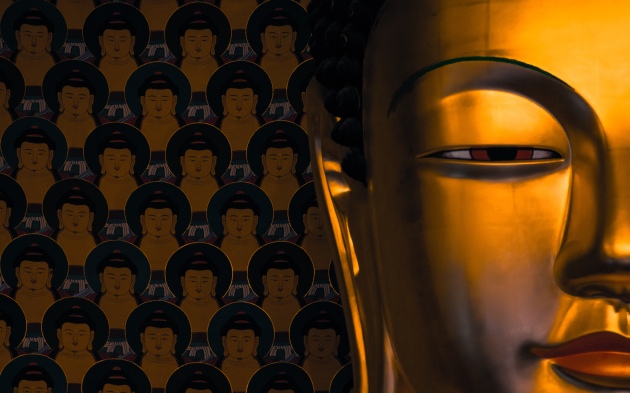
Backstage at Seoul Fashion Week 2014
Last week was Seoul Fashion Week. Style is a big deal here in Korea, and true to form the shows were a little quirky and different. Koreans really can get away with wearing anything.
I helped cover the show for a friend over the weekend, and managed to grab some backstage shots also. I loved the moment of transition when the model steps back behind the curtain, and the expression returns to their face. Mannequin transforms to human, and you appreciate watching another person at work, just like everyone else.
Revisiting Gyeongbokgung / To black and white, or not to black and white?
Which image do you prefer?
The majority, when asked, have expressed a preference for the capture in colour. This was not my original choice for the image.
I’ve been shooting a lot in black and white recently. I’ve been wondering about this; why I’m increasingly tempted to go for monochrome when there are interesting and vivid colour contrasts before me.
I think this is partially season, and also mood. The past year was a rollercoaster ride of love, sun, and energy. I wanted to capture the warmth and variety of what was around me – black and white would kill the emotion I am trying to communicate in the picture. A picture can be viewed through a technical analysis, but, ultimately, the majority of the meaning and significance is personal. Nobody shall understand the picture better than the individual who takes it.
So now, in Seoul, a cold and fairly ugly city, many of my pictures feel monochrome to me. I want to capture the cold, the atmosphere, and also the space.
The above picture, in Gyeongbokgung, produces an interesting dilemma. The colours of the guards, trees, and buildings all provide a good enough basis for shooting in colour. Arguably the picture works because of the contrast between the earthy colours of the setting, and the blue of the guards.
Yet, I shot black and white.
Space is rare in Seoul, as most Asian cities. Gyeongbokgung provides a rare opportunity for elbow room and some open spaces for composition. The space currently feels further exaggerated for me, as a city dweller.
When there are large amounts of open space in my composition I have a tendency to prefer black and white. Consider this image.
I shot this in May last year. Whether or not the image is a successful capture, it shows that I tend to err towards black and white when shooting in large, open spaces. The contrast captures my mood and experience in the environment more effectively.
Why else could I be shooting Seoul in black and white?
Mood. I’m not depressed; far from it. It’s winter at the moment, and the weather is cold. Everyone has a low energy, and the greys of the city can be overwhelming. From a personal perspective, I’ve also been making my way in a new city, having to work hard both in a new job and when making friends. I’m no longer capturing images as experiences of love-filled moments shared with others; I’m lonely. Going out and finding moments to capture is currently a solitary experience where I must find what I need – it no longer occurs spontaneously with the people around me.
Here’s another capture from a “lonely” experience
A journey on the London Underground.
My memory of this experience feels black and white in my mind, not just the photograph.
The decision to present moments in black and white or full colour is such a fundamental way to change images.
To the photographer it can feel completely logical and natural; it feels right, and photography is foremost driven by feeling.
Next time you make the seemingly obvious and arbitrary decision, consider just how the image feels.
What’s your personal experience, in this moment?

